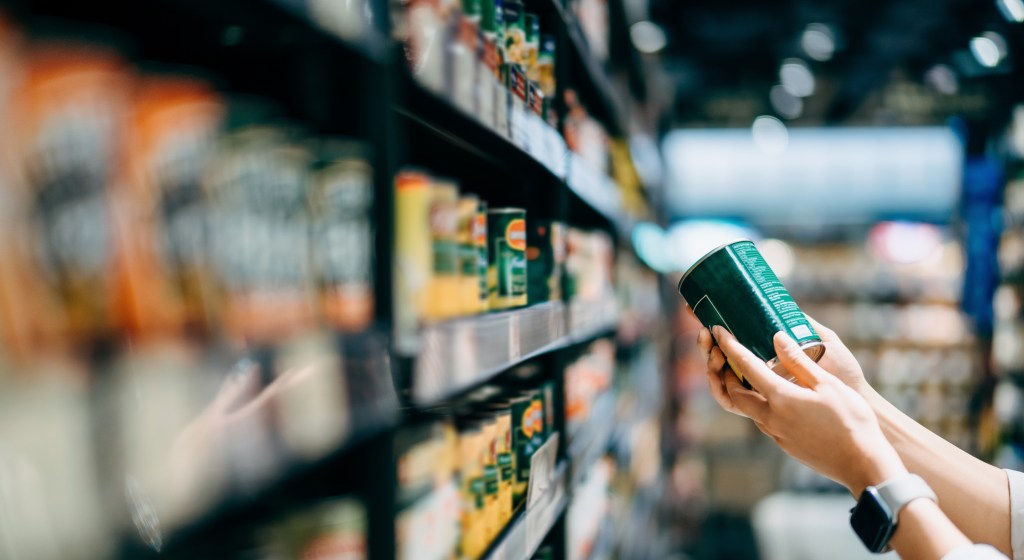Brands must meet their consumers at the omnichannel
NielsenIQ has studied this shift in behavior closely. While consumers may no longer be responding directly to the news of COVID-19 with their wallets, there have been emerging trends in their purchase decisions. One overarching narrative has been the rise of omnishopping as the “new normal.” Certain patterns have emerged that can help predict buyer behaviors moving forward: a basket reset, a homebody reset, a rationale reset, and an affordability reset. All these behavioral shifts are tied to surging unemployment and economic concerns.
Consumers are no longer shopping exclusively in-store, and businesses will have to react to this changing behavior. Over half (55%) of constrained consumers—consumers who experienced a decline in income during the pandemic—have visited a new store or retailer since the pandemic started. More than a quarter (27%) of all consumers have added online channels to their store repertoire. Two-thirds of consumers are now shopping both in-store and online, with more technologically advanced nations seeing even higher penetration.
This shift in consumer buying behavior, which has resulted in a proliferation of new stores and channels added to shoppers’ routines, represents an extensive opportunity for brands. Meeting your customers where they are is now imperative moving forward. Finding new retailers, adding digital channels, and expanding on social media will now make or break a brand.
4 consumer behavior shifts have resulted from economic insecurity
About one-third of consumers globally now identify as constrained. Consequently, there have been significant changes in the rationales leading to buying decisions, all tied to economic insecurity and unemployment. These changes can be classified into 4 categories.
1. Basket reset
Will your product be in the new consumer’s basket? Customers are buying different items these days. Sales of fresh produce have risen 7.6%, canned food is up 4.5%, and frozen food is up 8.8%. Buyers are stretching their dollars further, with a focus on necessities. These product categories have grown to the detriment of others, such as textiles, light bazaar, and heavy bazaar. Insulated consumers, who have not experienced income losses, have nonetheless adjusted and are more carefully managing basket size to keep a larger and broader stock of essential items. Constrained spenders are minimizing stockpiling, and new circumstances are forcing a choice between basket wants and needs.
2. Homebody reset
How are consumers re-creating occasions at home? Consumers are cooking at home more, cleaning their own homes more often, and performing their own beauty regimens at home. Baking at home in the U.S. has more than doubled during the pandemic. Insulated spenders are exploring do-it-yourself activities in food and personal care, while constrained spenders do so out of necessity.
3. Rationale reset
A single appealing characteristic of a product, such as perfume’s pleasing scent or a biscuit’s delicious flavor, is no longer the makings of a winning brand. All of the reasons behind consumers’ decisions have formed a more holistic view of a product. There has been a mass shift to favoring local and sustainable products. Sales of locally produced goods have experienced a 19% increase since the beginning of COVID-19, and organic has increased by 15%. In France, 60% of households report buying more local French products.
4. Affordability reset
What do consumers want right now, and how can they afford it? The price of goods has become more important than ever, especially as one-third of global consumers have experienced a decline in income. As product availability has returned to normal, even insulated consumers are valuing price as a purchase driver, perhaps due to uncertainty about future events. Constrained consumers, however, do so out of necessity. Brands have an opportunity to offer more promotions. Consumers are looking for great deals now more than before the pandemic, especially online, but 32% have noticed a decline in promotions in stores where they shop.
Adapting to the new normal
The pandemic catalyzed phenomenal change in markets and behavior, and transformed in 3 months what normally would have taken 3 years to occur.
It’s imperative that you adapt to these headwinds by reassessing your brand purpose, creating new customer locations, and meeting the new consumer where they shop. Only by doing so can you thrive during this current displacement, and recession-proof your brand.
Buying behavior is ever-changing, and if brands are to adapt to the new normal, they must react to shifting global opportunities as those changes occur.




